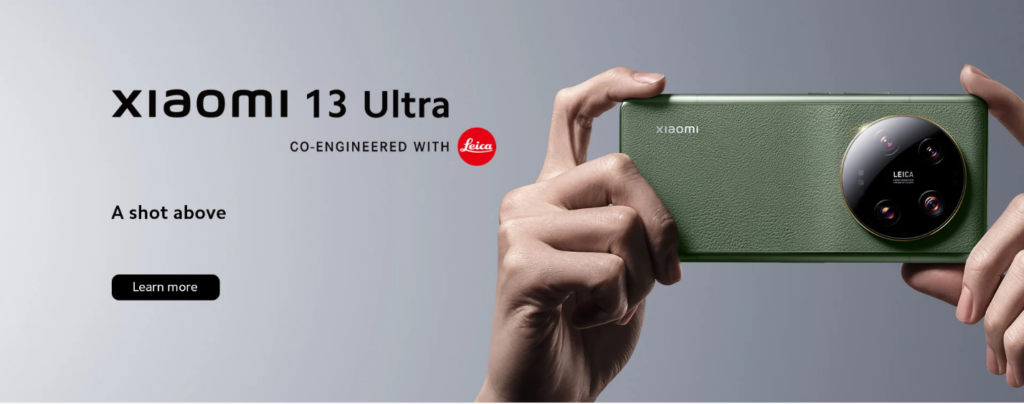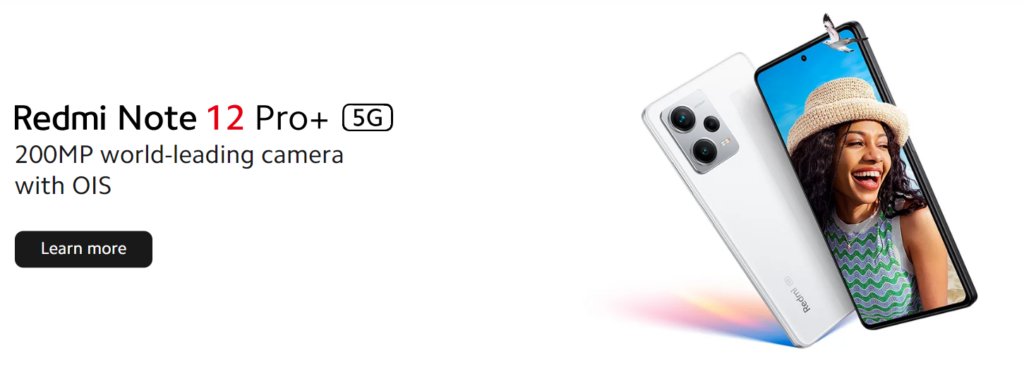Disrupting the Market: Unraveling Xiaomi’s Game-Changing Marketing Strategy
Xiaomi has emerged as a disruptive force in the tech industry, captivating the attention of consumers worldwide. While its rise to prominence can be attributed to various factors, one crucial element that underpins its success is its ingenious marketing strategy.
In this article, we delve into the fascinating world of Xiaomi’s marketing strategy, unraveling the key aspects that have propelled the company to unparalleled heights.
Overview of Xiaomi’s Emergence in the Tech Industry
Xiaomi, founded in 2010, quickly gained traction by offering feature-packed smartphones at remarkably affordable prices. This approach resonated with consumers seeking high-quality devices without breaking the bank.
Xiaomi’s early success can be traced back to its ability to disrupt the established market by challenging industry giants with its innovative offerings.
Importance of Marketing Strategy in Xiaomi’s Success
While Xiaomi’s product lineup boasts impressive features and specifications, its marketing strategy plays a pivotal role in translating these offerings into tangible market success.
By meticulously crafting a strategic approach, Xiaomi has managed to create a strong brand identity and establish a loyal customer base. From product positioning to brand messaging, every aspect of Xiaomi’s marketing strategy has contributed to its unprecedented growth.
Preview of the Key Aspects Covered in this Article
In the subsequent sections of this article, we explore the various facets of Xiaomi’s marketing strategy in detail. We begin by analyzing Xiaomi’s unique value proposition, uncovering how the company differentiates itself from competitors.
Next, we delve into the target market and consumer insights, shedding light on the understanding Xiaomi has gained about its customer base. Furthermore, we examine Xiaomi’s approach to product development and innovation, showcasing the brand’s commitment to staying ahead of the curve.
Moving forward, we explore Xiaomi’s digital marketing strategy, highlighting the channels and tactics employed to engage with consumers effectively. We also take a closer look at Xiaomi’s renowned flash sales and exclusive launches, understanding the underlying strategies and their impact on the company’s success. Additionally, we delve into Xiaomi’s international expansion efforts, examining the challenges and triumphs encountered in the global market.
Furthermore, we investigate how Xiaomi focuses on building a passionate community and leveraging brand advocates to strengthen its position in the market.
Through a comprehensive competitor analysis, we compare Xiaomi’s marketing strategy with its rivals, uncovering the strengths and weaknesses of each approach. Finally, we conclude by peering into the future, discussing potential trends and opportunities that lie ahead for Xiaomi’s marketing endeavors.
Stay tuned as we embark on this exciting journey through Xiaomi’s game-changing marketing strategy, unveiling the secrets behind the company’s remarkable success.
Understanding Xiaomi

Xiaomi has established itself as a prominent player in the consumer electronics industry. In this section, we delve into the background, history, and key milestones of Xiaomi as a company. We also provide an overview of Xiaomi’s diverse product portfolio.
Background and History of Xiaomi
Xiaomi, founded by Lei Jun in 2010, emerged as a Chinese electronics company with a vision to provide high-quality products at affordable prices. Initially starting with smartphones, Xiaomi quickly gained recognition for its innovative approach and disruptive business model.
The company’s commitment to offering value-for-money products resonated with consumers, propelling Xiaomi’s rapid growth and expansion.
Key Milestones and Achievements
Since its inception, Xiaomi has achieved several significant milestones that have solidified its position in the market. Here are some key achievements:
Early Success
Xiaomi’s first major success came with the release of the Xiaomi Mi 1 smartphone in 2011, which garnered widespread acclaim for its impressive features and competitive pricing.
International Expansion
Xiaomi ventured beyond the Chinese market in 2014, entering India and other countries. Its expansion strategy focused on offering localized products and services to cater to the unique needs of each market.
Market Dominance in India:
Xiaomi established itself as the leading smartphone brand in India, capturing a substantial market share. Its high-quality yet affordable smartphones struck a chord with Indian consumers, propelling Xiaomi to the forefront of the industry.
Diversification of Product Portfolio
Over the years, Xiaomi expanded its product portfolio to include a wide range of consumer electronics, including smart TVs, laptops, smartwatches, home appliances, and more. This diversification strategy enabled Xiaomi to cater to different customer segments and broaden its market reach.
Since its inception, Xiaomi has achieved several significant milestones that have solidified its position in the market. Here are some key achievements:
Overview of Xiaomi’s Product Portfolio
Xiaomi boasts an extensive product portfolio, encompassing various categories. Some of the key product offerings include:

1. Smartphones:
Xiaomi offers a diverse range of smartphones across different price segments, catering to the varying needs and budgets of consumers.

2. Smart Home Devices:
Xiaomi has expanded into the smart home market, offering products such as smart TVs, smart speakers, home security systems, and smart appliances that integrate seamlessly with each other.

3. Wearables:
Xiaomi produces a range of wearables, including smartwatches, fitness bands, and wireless earphones, enabling users to track their health and stay connected on the go.

4. Other Consumer Electronics:
Xiaomi also offers laptops, tablets, audio devices, power banks, and other accessories, providing a comprehensive ecosystem of products to enhance the digital lifestyle of its customers.
A diverse product portfolio has given them the advantage to improve profitabilty and also reach out to new circle of audience, as well as sell more products to existing customers.
PRO TIP:
Xiaomi’s Unique Value Proposition
Xiaomi’s value proposition is focused on offering high-quality products at affordable prices, without compromising on the features and performance typically associated with premium brands.

This unique approach sets Xiaomi apart from its competitors in the consumer electronics industry.
Affordability
One of Xiaomi’s key differentiators is its focus on affordability. By leveraging efficient supply chain management, economies of scale, and direct-to-consumer sales channels, Xiaomi is able to offer products at significantly lower prices compared to its competitors.
This affordability attracts a large customer base, especially in price-sensitive markets like India and China, where Xiaomi has gained significant market share.
Quality
Despite the lower price point, Xiaomi maintains a strong emphasis on quality. The company invests in research and development, collaborates with leading technology partners, and employs rigorous quality control measures to ensure that its products meet or exceed customer expectations.
This commitment to quality enables Xiaomi to build trust and loyalty among its customers.
User-Centric Design
Additionally, Xiaomi places a strong emphasis on user-centric design and innovation. The company actively engages with its user community, gathers feedback, and incorporates customer preferences into its product development process.
This approach allows Xiaomi to deliver products that cater to the specific needs and preferences of its target market, further enhancing its value proposition.
In summary, Xiaomi’s value proposition revolves around providing affordable yet high-quality products, coupled with user-centric design and innovation.
This approach enables Xiaomi to differentiate itself from competitors and attract a loyal customer base seeking cost-effective solutions without compromising on quality.
Target Market and Consumer Insights
Xiaomi has adopted a market positioning strategy aimed at bridging the gap between the mass market and the high-end segment.
The company intends to aggressively expand its product line to gain a competitive edge in the highly competitive global market. Xiaomi targets different segments through its various product offerings:
- Redmi: Xiaomi’s Redmi brand targets general customers in the smartphone market, focusing on offering affordable smartphones with good features and specifications.
- Poco: Poco is positioned to attract customers with a budget of more than ₹20k. It aims to provide high-quality smartphones with advanced features at a relatively affordable price point.
- MI: MI targets customers with a budget of more than ₹30k. It offers premium smartphones with advanced technologies and features to cater to the higher-end segment.
- Black Shark: Xiaomi’s Black Shark brand caters to the gaming smartphone market, targeting gamers who seek devices optimized for gaming performance.
- Mi Smart Bands and Mi Watch: Xiaomi offers smartwatches and smart bands that target general customers as well as customers with a higher budget, providing options at different price points.
- Other Offerings: Xiaomi has expanded its product portfolio to include laptops, speakers, earphones, Wi-Fi routers, power banks, and related accessories. These offerings cater to a wide range of customers in different segments.
Analysis of Consumer Insights and Preferences: Xiaomi’s success lies in understanding consumer insights and preferences. Some key insights and preferences include:
- Value for Money: Consumers are attracted to Xiaomi due to its reputation for offering feature-packed products at competitive prices. Xiaomi’s affordability combined with good quality and performance appeals to budget-conscious consumers.
- Online Sales and Community: Xiaomi has built a strong online presence and leverages its Mi Community App, which serves as an online platform for users to share experiences, find solutions, and engage with the brand. This approach helps in creating a loyal customer base and fostering a sense of community.
- Brand Reputation and Trust: Xiaomi has gained the trust of consumers through consistent product quality and reliability. Positive word-of-mouth and recommendations from existing customers contribute to building Xiaomi’s brand reputation.
Utilization of Data-Driven Approaches: Xiaomi employs data-driven approaches to understand customer behavior and preferences. By analyzing data from various sources such as online platforms, sales records, customer feedback, and market research, Xiaomi gathers insights to inform product development, marketing strategies, and customer engagement initiatives. These data-driven approaches help Xiaomi in making informed decisions, improve customer satisfaction, and stay competitive in the market.
Product Development and Innovation

Xiaomi has gained recognition in the consumer electronics market not only for its affordability but also for its focus on product development and innovation. The company’s approach to product development and innovation can be characterized by its emphasis on user feedback and iteration, as well as its introduction of disruptive technologies and features.
- Emphasis on User Feedback and Iteration: Xiaomi places great importance on gathering and incorporating user feedback into its product development process. The company actively engages with its user community through various channels, such as online forums and social media platforms. Xiaomi encourages users to provide feedback, suggestions, and even participate in beta testing programs for new products and software updates. This user-centric approach allows Xiaomi to understand customer needs and preferences, identify areas for improvement, and make iterative changes to its products based on real-world user experiences.
- Introduction of Disruptive Technologies and Features: Xiaomi is known for introducing innovative and disruptive technologies and features in its products. The company aims to provide cutting-edge technology at affordable prices, challenging the traditional market leaders. Xiaomi has been at the forefront of incorporating new trends and features into its products, such as high-resolution displays, powerful processors, advanced camera systems, and long-lasting batteries. By offering such features in its products, Xiaomi aims to provide value and a premium experience to its customers, despite the competitive pricing.
Furthermore, Xiaomi has expanded its product portfolio beyond smartphones to include a wide range of consumer electronics, including smart home devices, wearables, audio products, and more. This diversification demonstrates Xiaomi’s commitment to continuous innovation and exploring new product categories.
Overall, Xiaomi’s approach to product development and innovation revolves around listening to its users, incorporating their feedback, and pushing the boundaries of technology to deliver affordable products with advanced features. By combining user-centricity and disruptive technologies, Xiaomi has been able to establish a strong position in the market and maintain its reputation as an innovative brand.
Xiaomi’s Digital Marketing Strategy
Xiaomi, a leading Chinese electronics company, has implemented a robust digital marketing strategy to enhance its brand presence and engage with its target audience. Here is an overview of Xiaomi’s digital marketing channels and some key strategies they employ:
- Social media engagement: Xiaomi actively utilizes social media platforms such as Facebook, Instagram, Twitter, and YouTube to connect with its customers. They create engaging content, share product updates, and interact with their audience through comments and messages. Xiaomi leverages these platforms to build a strong online community and foster brand loyalty.
- Influencer partnerships: Xiaomi collaborates with social media influencers and celebrities to promote its products. They partner with influencers who have a large following and align with Xiaomi’s target market. These influencers endorse Xiaomi’s products, share their experiences, and create buzz around new launches. This strategy helps Xiaomi reach a wider audience and build credibility.
- User-generated content: Xiaomi encourages its customers to share their experiences and reviews of their products on social media. They run campaigns and contests that encourage users to create and share content related to Xiaomi’s products. This user-generated content not only acts as social proof but also helps create a sense of community among Xiaomi users.
- Viral marketing: Xiaomi leverages viral marketing techniques to create buzz around its products. They often launch unique and creative campaigns that catch the attention of users and generate widespread sharing and discussion on social media platforms. These campaigns aim to create a viral effect, leading to increased brand awareness and engagement.
- Online advertising: Xiaomi invests in online advertising to reach a larger audience. They use targeted ads on platforms like Google Ads and social media platforms to promote their products. By leveraging data-driven targeting, Xiaomi ensures that its ads are shown to relevant users, maximizing the effectiveness of its advertising campaigns.
Overall, Xiaomi’s digital marketing strategy focuses on leveraging social media engagement, influencer partnerships, user-generated content, viral marketing, and online advertising to build brand awareness, engage with customers, and drive sales.
Flash Sales and Exclusive Launches

Xiaomi has successfully implemented a flash sale model as part of its marketing strategy. Flash sales involve offering limited quantities of products for a short period, typically a few hours or a day, at highly discounted prices. Xiaomi’s flash sales have become a popular and effective way to generate buzz, create scarcity, and drive sales. Here’s an explanation of Xiaomi’s flash sale model and its benefits and challenges:
Explanation of Xiaomi’s Flash Sale Model:
- Limited Availability: Xiaomi releases a limited number of products for sale during flash sales. This creates a sense of exclusivity and urgency among customers, encouraging them to make quick purchasing decisions.
- Online Platform: Xiaomi primarily conducts flash sales through online platforms, such as its official website or e-commerce partners. This allows a wide reach and easy accessibility for customers to participate in the sale.
- Time-Limited Offers: Flash sales are time-bound, usually lasting for a few hours or until the available stock runs out. This time constraint adds a sense of urgency, compelling customers to make immediate purchases.
Building Hype and Creating Scarcity:
- Generating Excitement: Xiaomi builds anticipation and excitement among its customers by promoting upcoming flash sales through various marketing channels. This creates a buzz and increases customer engagement.
- Scarcity Marketing: By offering limited quantities of products, Xiaomi creates a perception of scarcity. This motivates customers to act quickly and purchase the products before they are sold out.
Benefits of Flash Sales:
- Increased Sales: Flash sales often lead to a surge in sales volume due to the sense of urgency and attractive pricing. Xiaomi can achieve high sales figures within a short period, boosting revenue.
- Marketing Buzz: Flash sales generate significant attention and buzz around Xiaomi’s products. Customers eagerly anticipate upcoming sales and the limited availability creates a sense of exclusivity and desirability.
Challenges of Flash Sales:
- Stock Management: Xiaomi needs to carefully manage its inventory to ensure it can meet the demand generated by flash sales. Maintaining the right balance between scarcity and availability is crucial.
- Customer Disappointment: Due to limited quantities, some customers may miss out on purchasing their desired products during flash sales. This can lead to frustration and negative sentiment if not managed effectively.
- Scalper Activity: Flash sales attract scalpers who try to purchase products in bulk to resell them at higher prices. Xiaomi needs to implement measures to counteract scalping and ensure genuine customers have a fair chance to purchase.
Overall, Xiaomi’s flash sale model has proven to be an effective marketing strategy, driving sales and creating a sense of excitement and exclusivity around its products.
International Expansion
Xiaomi has adopted a strategic approach to expand into global markets, aiming to establish a strong presence outside its home country of China. The company has implemented localization and customization strategies to cater to the specific needs and preferences of consumers in different international markets.
Localization is an essential aspect of Xiaomi’s international expansion strategy. The company understands the importance of adapting its products and services to suit local market conditions, cultural nuances, and consumer preferences. Xiaomi has made efforts to customize its smartphones and other devices to meet the requirements of different regions, including language support, pre-installed local apps, and tailored user interfaces. By focusing on localization, Xiaomi enhances the user experience and increases its chances of acceptance and success in new markets.
Furthermore, Xiaomi has taken into account the affordability factor while expanding internationally. The company’s core business model of offering high-quality products at competitive prices has resonated well with price-sensitive markets around the world. Xiaomi’s value-for-money proposition has helped it gain traction and establish a strong foothold in many countries, especially emerging markets.
Despite its successes, Xiaomi has also faced challenges in its international expansion. One of the main obstacles is the competitive landscape in each market, where established brands and local players pose significant competition. Xiaomi has had to navigate through various regulatory and legal complexities in different countries, such as intellectual property rights issues and trade barriers. Additionally, building brand recognition and trust among consumers who may not be familiar with Xiaomi’s brand has been another challenge.
Nevertheless, Xiaomi’s international expansion has been largely successful, with the company gaining significant market share in countries like India, Indonesia, and parts of Europe. By prioritizing localization, affordability, and adapting to market conditions, Xiaomi has been able to establish itself as a major player in the global smartphone and consumer electronics industry.
Community Building and Brand Advocacy

Xiaomi has been highly successful in building a passionate community around its brand. The company has recognized the importance of engaging with its users and creating a sense of belonging among them. Here are some key aspects of Xiaomi’s focus on community building and brand advocacy:
- Engaging with users through forums and events: Xiaomi initially relied on online forums and social media platforms to connect with its users. The company’s founder and team actively participated in discussions, addressing user queries and concerns. This direct interaction helped Xiaomi establish a strong connection with its customer base and build a loyal community.
- Mi Community App: Xiaomi has developed the Mi Community App, which serves as an online platform for users to interact with each other, share experiences, and seek help. The app encourages users from around the world to contribute and engage, fostering a sense of community and allowing users to feel involved in the brand.
- Exclusive events and fan meet-ups: Xiaomi organizes various events and fan meet-ups where users can meet company representatives, participate in activities, and experience new products. These events provide an opportunity for Xiaomi to further strengthen its bond with its passionate user base and generate positive word-of-mouth.
- Leveraging brand advocates: Xiaomi has actively cultivated a community of brand advocates who are passionate about the brand and its products. These advocates, including loyal customers and influencers, play a crucial role in promoting Xiaomi organically. The company often collaborates with them to create user-generated content, reviews, and testimonials, which helps generate buzz and build credibility.
- User feedback and product improvements: Xiaomi values user feedback and incorporates it into product development and improvements. By actively listening to its community, Xiaomi ensures that its products meet the needs and preferences of its users. This approach fosters a sense of ownership and loyalty among the community members.
By focusing on community building and leveraging brand advocates, Xiaomi has been able to create a passionate user base that actively promotes the brand. This organic promotion through word-of-mouth and user-generated content has been instrumental in Xiaomi’s success and market penetration.
Competitor Analysis
Xiaomi operates in a highly competitive market, and it is essential to analyze its marketing strategy in comparison to its competitors. Here’s a brief analysis of Xiaomi’s marketing strategy, strengths, weaknesses, market positioning, and differentiation.
Marketing Strategy Comparison:
Xiaomi’s marketing strategy differs from its competitors in several ways:
- Pricing Strategy: Xiaomi offers high-quality products at competitive prices, targeting cost-conscious consumers. This pricing strategy distinguishes Xiaomi from premium brands like Apple and Samsung.
- Online Sales Focus: Xiaomi primarily sells its products online, leveraging e-commerce platforms and flash sales. In contrast, some competitors have a stronger offline retail presence.
- Fan Base and Community Engagement: Xiaomi has successfully built a strong fan base through its online community, Mi Community App. It fosters engagement and provides a personal space for users to interact and share experiences, setting Xiaomi apart from competitors.
Strengths:
- Competitive Pricing: Xiaomi’s affordable pricing strategy has been a key strength, attracting price-conscious consumers and gaining market share.
- Diverse Product Portfolio: Xiaomi offers a wide range of products, including smartphones, smartwatches, laptops, speakers, and more. This diverse portfolio allows Xiaomi to cater to various customer segments and expand its market reach.
- Strong Online Presence: Xiaomi has effectively leveraged online channels and social media platforms to reach its target audience, generate brand awareness, and drive sales.
- Brand Recognition: Xiaomi has gained significant brand recognition globally, especially in emerging markets like India, due to its innovative products and aggressive marketing efforts.
Weaknesses:
- Limited Offline Presence: While Xiaomi is expanding its offline presence, its primarily online sales approach can be a weakness in markets where offline retail is preferred or trusted more.
- Perception Challenges: Being a Chinese company, Xiaomi has faced some challenges related to consumer trust and perceptions regarding data privacy and security. Such challenges can affect its market positioning in certain regions.
Market Positioning and Differentiation:
- Xiaomi positions itself as a value-for-money brand, targeting consumers seeking affordable yet feature-packed products.
- Differentiation through Pricing: Xiaomi’s aggressive pricing strategy differentiates it from premium brands and positions it as an accessible alternative for budget-conscious consumers.
- Emphasis on Innovation: Xiaomi has gained a reputation for offering innovative features and technologies at affordable prices, setting itself apart from other budget-oriented competitors.
In summary, Xiaomi’s marketing strategy stands out through its competitive pricing, online sales focus, strong community engagement, and diverse product portfolio. Its strengths include competitive pricing, diverse product offerings, a strong online presence, and brand recognition. However, limited offline presence and perception challenges related to its Chinese origin can be considered weaknesses. Xiaomi’s market positioning revolves around being a value-for-money brand with a focus on innovation, differentiating itself from premium brands and budget-oriented competitors.
Future Trends and Opportunities
Predictions for Xiaomi’s Future Marketing Initiatives:
- Emphasis on AI and IoT: Xiaomi has already made significant strides in the development of AI and IoT technologies. In the future, we can expect Xiaomi to further integrate these technologies into its product ecosystem. They may focus on creating a seamless and connected experience for users, allowing their devices to communicate and share data, ultimately enhancing user convenience and satisfaction.
- Expansion into New Markets: Xiaomi has primarily focused on emerging markets such as India and Southeast Asia. In the future, they may explore opportunities to expand their presence in developed markets like Europe and North America. To penetrate these markets successfully, Xiaomi may need to adapt its marketing strategies to cater to the specific needs and preferences of these regions.
- Continued Online Dominance: Xiaomi has excelled in online sales, leveraging e-commerce platforms to reach a wide customer base. As online shopping continues to grow globally, Xiaomi is likely to maintain its strong online presence and leverage digital marketing channels to engage with its target audience effectively.
- Enhanced Branding and Advertising: While Xiaomi has relied on word-of-mouth marketing and online reviews to build brand awareness, it may invest more in traditional advertising channels to further strengthen its brand image. This could involve collaborations with celebrities, influencers, and strategic partnerships with popular brands to expand their reach and appeal to a wider audience.
Potential Challenges and Strategies for Growth:
- Increasing Competition: Xiaomi operates in a highly competitive market, and as they continue to expand globally, they will face increased competition from both established players and emerging brands. To overcome this challenge, Xiaomi will need to continue offering innovative products at competitive prices, while also focusing on building strong customer relationships and brand loyalty.
- Regulatory and Political Environment: Xiaomi’s Chinese origin may present challenges in certain markets due to geopolitical tensions and regulatory restrictions. To mitigate these risks, Xiaomi will need to establish strong local partnerships, comply with regional regulations, and proactively address any concerns regarding data security and privacy.
- Maintaining Innovation: Xiaomi’s success has been driven by its ability to offer feature-rich products at affordable prices. To sustain its growth, Xiaomi must continue investing in research and development, anticipating market trends, and introducing new technologies and innovations to stay ahead of the competition.
- Building Customer Trust: As Xiaomi expands into new markets, building trust with customers will be crucial. They must ensure high-quality products, excellent customer service, and transparent communication to address any concerns or misconceptions about their brand. Engaging with customers through social media, community forums, and other channels will be essential to maintain a positive brand reputation.
Overall, Xiaomi’s future marketing initiatives will revolve around leveraging emerging technologies, expanding into new markets, maintaining competitive pricing, and building a strong brand image to secure its position as a leading global consumer electronics company.
Conclusion
Xiaomi’s marketing strategy combines affordability, quality, and targeted promotions to drive its success in the consumer electronics market. The company’s ability to offer high-quality products at affordable prices has garnered a large customer base and established it as a leading smartphone brand. Through strategic marketing campaigns and brand ambassadors, Xiaomi has gained market share and global recognition. With its focus on innovation and customer satisfaction, Xiaomi is poised for continued growth and success in the industry.


